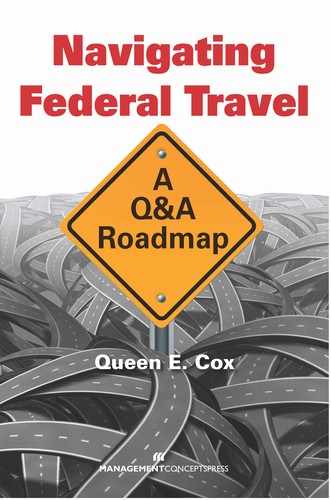Preface
The Administrator of General Services promulgates the Federal Travel Regulation (FTR) to (1) interpret statutory and other policy requirements in a manner that balances the need to ensure that official government travel is conducted in a responsible manner with the need to minimize administrative costs and (2) communicate the resulting policies clearly to federal agencies and employees. Federal travel is also governed and interpreted by other policy and mandated documents such as executive orders issued by the President of the United States, various circulars, memoranda, and bulletins issued by the Office of Management and Budget (OMB), and legal decisions issued by the Government Accountability Office (GAO) and the Civilian Board of Contract Appeals (CBCA), formerly the General Services Board of Contract Appeals (GSBCA).
This guidebook is based on those policy documents and other mandated documents resulting from congressional action. It is intended to provide government-wide generic guidance for civilian employees who are directed to perform official government travel using appropriated funds. However, it is not a policy handbook. Should there be a conflict between a statement in this guide and the FTR, the FTR takes precedence.
Navigating Federal Travel: A Q&A Roadmap is also intended to serve as a reference for federal employees who are responsible for managing all aspects of government travel. These employees include individuals authorized to approve official government travel using appropriated funds and to determine the need for travel, how the employee is to pay for expenses incurred in performing official travel, and how the employee is to be reimbursed for authorized travel and travel-related expenses. It is also directed to those responsible for managing the government travel charge card program. This guide does not cover every conceivable travel situation; in particular, it does not cover travel related to government aircraft, government ships, or threatened law enforcement and investigative employees. Nor does it cover travel rules for uniformed personnel.
A critical missing component in the management of government travel since the implementation of eTravel has been a dedicated senior position within federal agencies. An agency may have at least one employee assigned to manage its travel program. Even though this responsibility is a major component—and budgeted item—of accomplishing an agency’s mission, it is often regarded as an unwelcome “other duties as assigned” task. Unlike other government positions classified by the Office of Personnel Management (OPM), there are no position classification standards for someone who manages government travel. For example, there is no occupational series or position classification for a “travel manager.”
Consequently, individuals who manage travel, even for more than 50 percent of their daily duties or responsibilities, do not have the benefit of training that other occupational positions such as a budget analyst, accounting technician, or management analyst are provided. Travel management is learned mainly through on-the-job experience and by sharing best practices with other colleagues who manage government travel.
Managing government travel is a skill; to achieve efficiency and cost savings, a dedicated position is needed. Executive Order (EO) 13589, Promoting Efficient Spending, was issued on November 9, 2011, to fill that void in managed government travel. Section 3, Travel, states that “Each agency, agency component, and office of inspector general should designate a senior-level official to be responsible for developing and implementing policies and controls to ensure efficient spending on travel and conference-related activities.…” OMB subsequently issued M-12-12, dated May 11, 2012, providing additional guidance to agencies on managing government travel.
The FTR is the “bible” for managing government travel. However, it does not capture every conceivable travel situation or commonsense rule for travel. It therefore falls to legal experts, such as the CBCA and the Comptroller General, to provide interpretation, clarification, or the intended spirit of a law on which the FTR is based. Depending on the implementing legislation, such interpretation or clarification may be required from Congress or OMB.
Navigating Federal Travel consolidates various mandated and implementing travel documents into one document and can thus serve as a handy reference for those who manage government travel. It is formatted in a straightforward and concise question-and-answer format similar to the FTR, with examples of situations that a civilian traveler might encounter before, during, and after approval of authorized travel. It includes specific sections of the FTR and decisions of the GAO and the CBCA (and its predecessor, the GSBCA). In addition, it provides important reference citations that may assist in determining the appropriate method for traveling and resolving travel matters.
Since travel on government-appropriated funds must be authorized and approved in accordance with established travel rules, policies, and regulations, including agency-specific policy, this guidebook should be used as a supplement rather than a replacement for official training on the FTR. Used as a supplement, it is intended to provide a better understanding of the FTR and clarification through cited references and litigated examples.
Although not stated in each instance, travelers should always contact their agency travel manager and other appropriate agency officials, including their agency’s ethics officer, human resources manager, and inspector general for further guidance and assistance.
Happy—and productive—trails!
—Queenie Cox
September 2012
